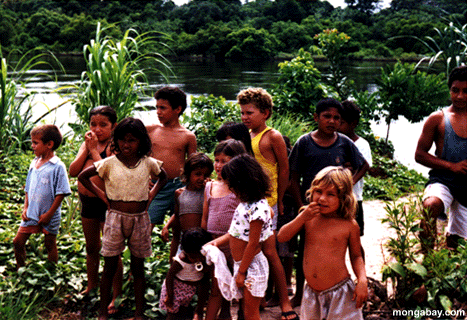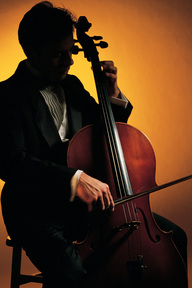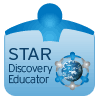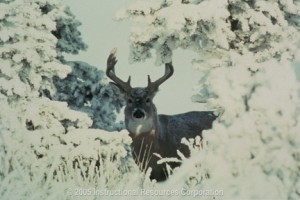The course in Digital Media has come to a close and the final project, a Google Earth tour, has been submitted, hopefully intact. For this project I chose the topic, Rainforests of the World, as that is a topic for third grade science and I have done rainforest activities with the third grade in the past. The Diocesan curriculum for science at that grade level includes:
B. Plants
1. Life cycles
2. Adaptations for survival
3. Populations
4. Communities
- Producers
- Grassland
- Ocean
- Rainforest
The most difficult part of this project for me was actually coming up with the subject matter. Not being a “regular” classroom teacher, I have my hands in everyone’s curriculum, but needed to search through Diocesan guidelines for topics that would lend themselves to this medium and become a learning activity from which students could truly benefit.
 There is much in this topic of rainforests that lends itself to developing respectful and ethical minds. Very often when we think of rainforests we think of the vegetation, the animal life, but do we think of the human inhabitants of these regions as well? In this virtual field trip the students not only learn of rainforest layers and beautifully exotic flora and fauna, but they have a chance to glimpse totally different lifestyles and to compare them with their own. They have the opportunity to appreciate the similarities and differences among people of very different cultures and realize that children all over the world are basically the same.
There is much in this topic of rainforests that lends itself to developing respectful and ethical minds. Very often when we think of rainforests we think of the vegetation, the animal life, but do we think of the human inhabitants of these regions as well? In this virtual field trip the students not only learn of rainforest layers and beautifully exotic flora and fauna, but they have a chance to glimpse totally different lifestyles and to compare them with their own. They have the opportunity to appreciate the similarities and differences among people of very different cultures and realize that children all over the world are basically the same.
There are two forms of assessment included. One is the ongoing writing activity of posting thoughts to a blog. My third graders have taken to blogging with great enthusiasm. Keyboarding skills are always an issue but keeping the requirement to four sentences allows them a chance to review what they learned without becoming extremely frustrated. (We do work on keyboarding in third grade.) The other is a Discovery Quiz Builder activity at the conclusion of the trip when we return home.
Although my regular classroom experience was always with upper grade students, I have come to learn about the reading struggles of students in the primary grades as their (former) Spanish teacher and now technology teacher. In order for the struggling readers to get as much out of the experience as possible, I have embedded AudioPal recordings so they can listen to the text being read to them if they choose. One downside of this free tool is that the recordings can only be 60 seconds in length, so in some cases I feel that I may have been speaking too quickly. I had to sometimes have more that one player on a page for that reason. The only other audio included was sounds of the rainforest which was optional for listening. Other audio could have included sounds of various animals but of course there is always the possibility that too much of that can cause a distraction.
On the topic of images, I decided to use a customized placemark rather than an external image in an overlay. Since not every stop focused on animals, or plants, or people, there  would have been no suitable image theme, so I created a leaf image to symbolize the overall theme. I regret that before I began Photoshopping the leaf I neglected to note the source, so there is no actual citation for the original leaf in the Google Earth file. I created 6 leaves with the numbers 1-6 for the stops on the tour, and removed the white background. Then they were uploaded as customized placemarks. The remaining images in the project can be found within the contents of each place mark either as a static image or a linked image. To expand this project further, and I hope to do this before we actually use it in the classroom, I would insert additional links to images of plants and animals. Time constraints caused me to use just a smattering of external links for images. I am planning to insert a few more images of the more unusual species.
would have been no suitable image theme, so I created a leaf image to symbolize the overall theme. I regret that before I began Photoshopping the leaf I neglected to note the source, so there is no actual citation for the original leaf in the Google Earth file. I created 6 leaves with the numbers 1-6 for the stops on the tour, and removed the white background. Then they were uploaded as customized placemarks. The remaining images in the project can be found within the contents of each place mark either as a static image or a linked image. To expand this project further, and I hope to do this before we actually use it in the classroom, I would insert additional links to images of plants and animals. Time constraints caused me to use just a smattering of external links for images. I am planning to insert a few more images of the more unusual species.
I stayed with a basic format for each location, using HTML coding within each placemark’s properties. One way I could improve on the geographic understanding would be to insert an image within the placemark of a world map with that particular location shaded. I could create my own but that would entail adding my own images rather than hyperlinks, and there was the danger that the images would not stay packaged with the project. I may do this locally however.
There were a few moments of panic when Google Earth crashed in the midst of inserting links and media. Was it my computer, or was the application protesting media overload? I learned early on to SAVE frequently after losing some of my hard work after a crash.
By completing the activities during this virtual field trip I am hoping my students will develop a sense of respect for the other cultures and especially children of the world. We are not better, only different, and we are alike in so many ways. They can also develop an appreciation for the beauty and diversity in nature. In addition, even at a young age, they can begin to develop that ethical mind whereby they begin to look beyond their own needs, and begin to make choices that are right for the planet, and right for humanity in general.
At the conclusion of this course I have three projects that I can actually use with my students that will engage them in authentic 21st century learning. I have also grown so much in my personal learning, not only from the readings but also from the sharing of a group of very hard-working and dedicated professionals who it is obvious have the best interests of their students at heart. I hope that I have made some small contribution in return.
Added Friday, October 16 (6:45 p.m.): Upon reviewing the .kmz file that had been uploaded via Moodle, I caught an error. I inserted the same audio recording in two places and missed the Amazon recording entirely. The link to the project on this page has the corrected version. I found that if I tried to send a second Audio Pal recording to the same email address, it would only keep the first one. I used half a dozen different email addresses to get them all; however it could be that after retrieving one recording, deleting that email would allow the new one to come through. Thankfully I had not emptied my trash and was able to find the correct audio clip without having to record again. Another lesson learned…Don’t be quick to empty the trash!
Citations
Amazon Rainforest Treetops. Corbis. 2009.
Discovery Education. 14 October 2009
http://streaming.discoveryeducation.com/
Children of the Amazon. 14 October 2009
http://www.mongabay.com/
 form as excellently as possible
form as excellently as possible me. Back in January of 2006 I applied to be a STAR educator and had some correspondence with one Lance Rougeux, who decided that I should not withdraw my application just because I felt I might not be able to do all that was expected of me. I am very glad he took a chance on me. Attending my first PETE&C that February was like opening the door from Kansas to Oz. There was no turning back.
me. Back in January of 2006 I applied to be a STAR educator and had some correspondence with one Lance Rougeux, who decided that I should not withdraw my application just because I felt I might not be able to do all that was expected of me. I am very glad he took a chance on me. Attending my first PETE&C that February was like opening the door from Kansas to Oz. There was no turning back. So now when I look into the mirror (the dreaded mirror test?) I must ask myself if I am living up to my potential as an educator. Am I producing “good work” and encouraging others to do the same, both students and fellow teachers? Some days it is hard to motivate, and sometimes teachers are harder to motivate than students. And yet, aren’t we all students? Shouldn’t we all be life-long learners? That is the underlying theme of my Blackberry Alley blog. I began as a student, and went on to become a teacher, who has realized that she will always be a student, even as she continues to have students of her own. What I see in the mirror needs a little work (and I don’t mean just the wrinkles) but there is some promise. As I continue to develop my “five minds” perhaps I can be a model for my students of respect, good work ethic, and a touch of creativity. With periodic innoculations from my PLN as well as my students, I may yet pass muster.
So now when I look into the mirror (the dreaded mirror test?) I must ask myself if I am living up to my potential as an educator. Am I producing “good work” and encouraging others to do the same, both students and fellow teachers? Some days it is hard to motivate, and sometimes teachers are harder to motivate than students. And yet, aren’t we all students? Shouldn’t we all be life-long learners? That is the underlying theme of my Blackberry Alley blog. I began as a student, and went on to become a teacher, who has realized that she will always be a student, even as she continues to have students of her own. What I see in the mirror needs a little work (and I don’t mean just the wrinkles) but there is some promise. As I continue to develop my “five minds” perhaps I can be a model for my students of respect, good work ethic, and a touch of creativity. With periodic innoculations from my PLN as well as my students, I may yet pass muster. to get the students adjusted to the blog site, but hope to try VoiceThread in the near future. There is so much my students can learn, not only about Canada, but about the native people to that area, the climate, even variations in the English language. We are all excited at what may unfold during the year. I only have one web cam, but I hope to make use of it during our interaction with the Canadian class, which is 2 hours behind us time wise.
to get the students adjusted to the blog site, but hope to try VoiceThread in the near future. There is so much my students can learn, not only about Canada, but about the native people to that area, the climate, even variations in the English language. We are all excited at what may unfold during the year. I only have one web cam, but I hope to make use of it during our interaction with the Canadian class, which is 2 hours behind us time wise. After following the link to the
After following the link to the